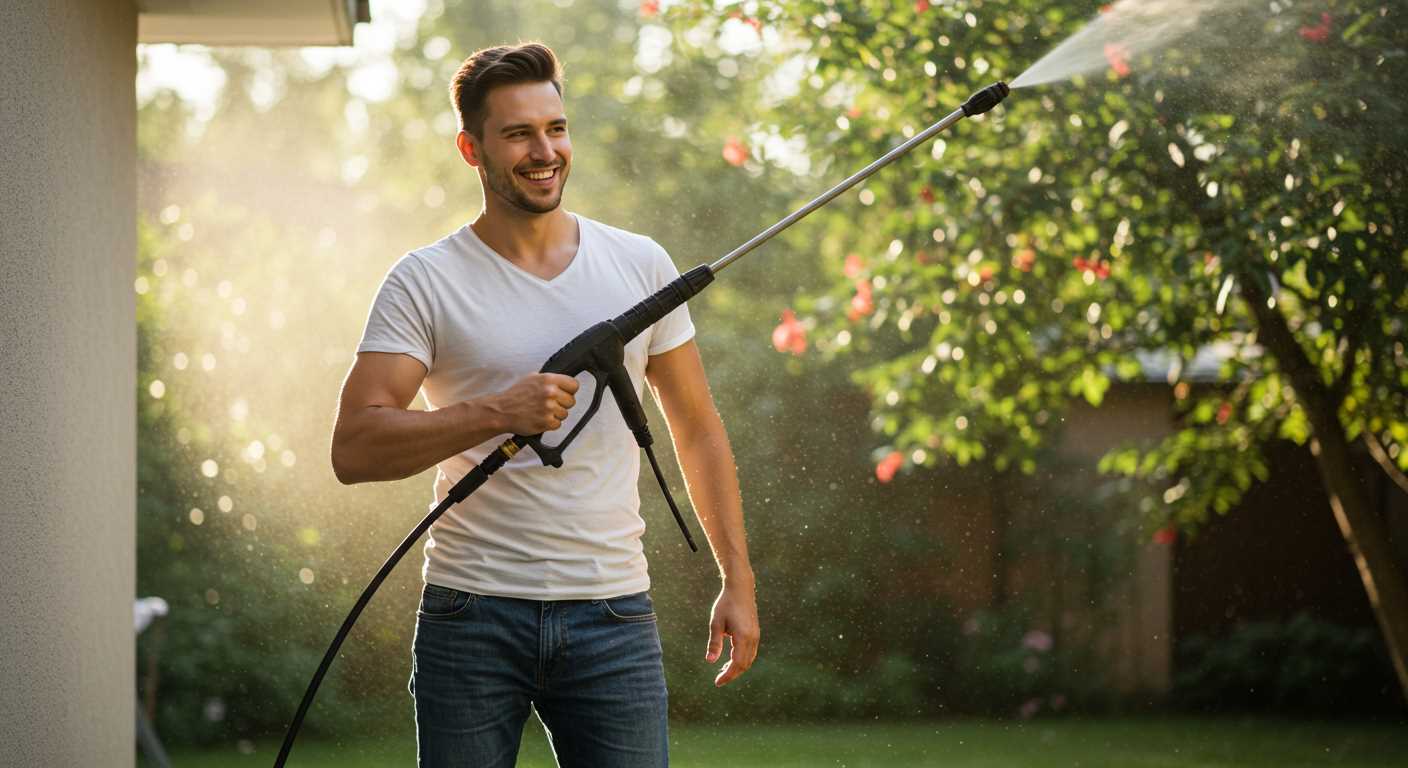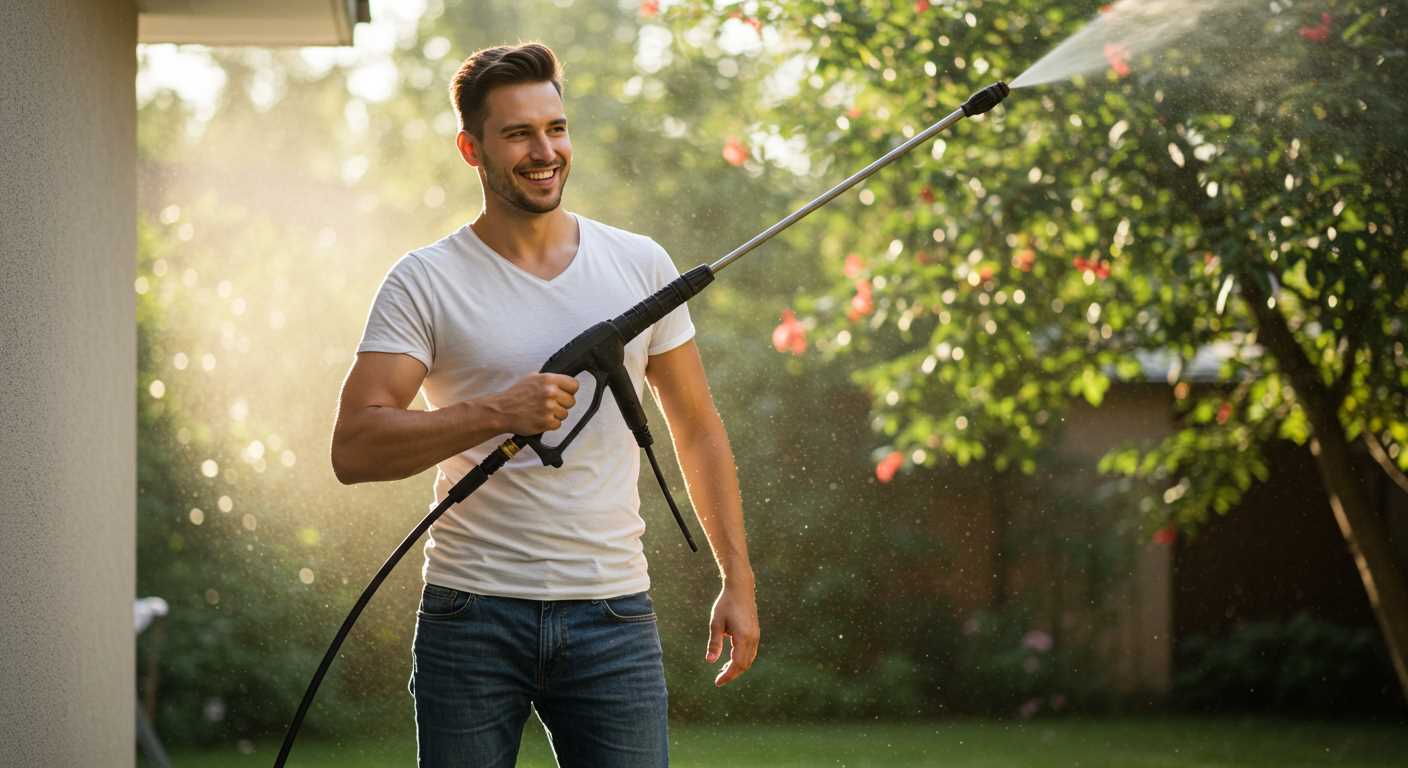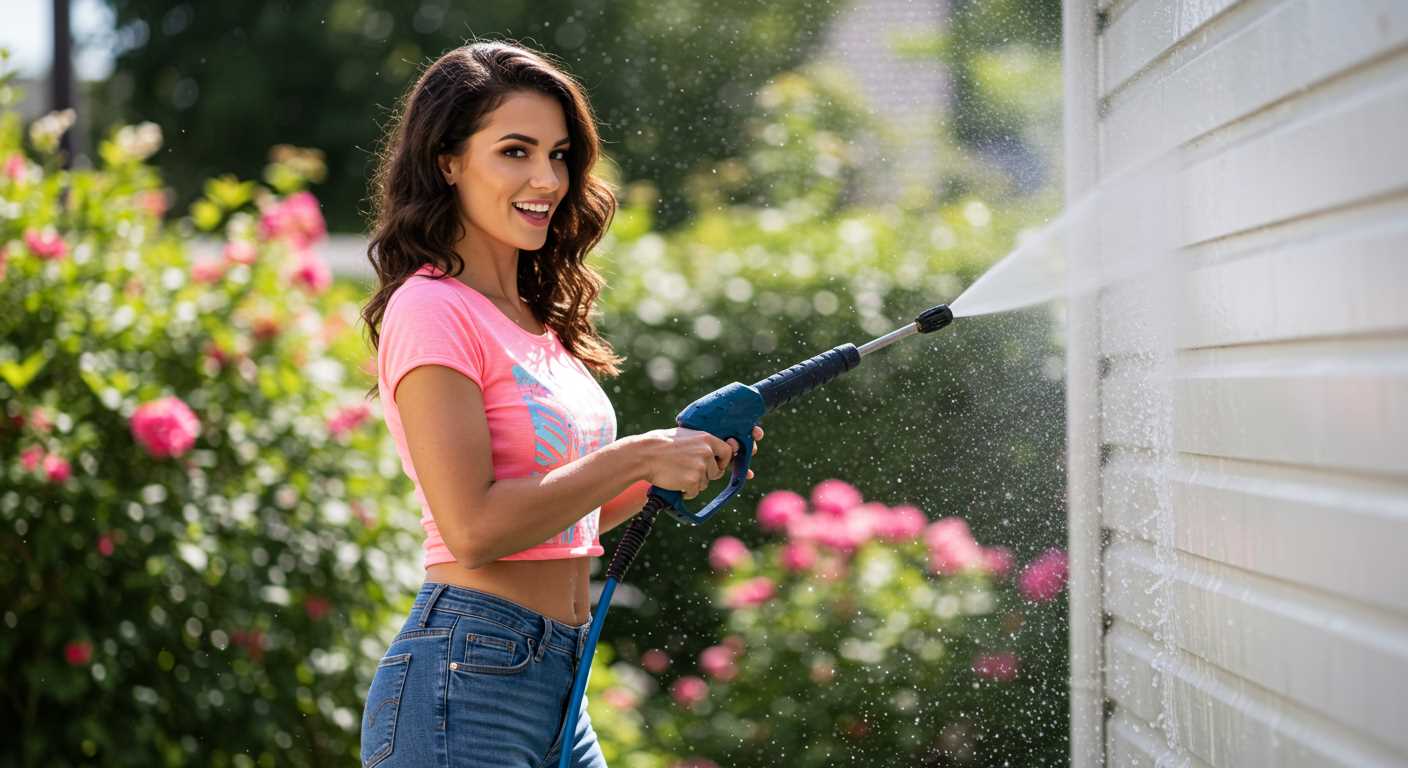




If you’re considering investing in a portable cleaning device, it’s crucial to grasp how these units operate. These tools rely on a battery to power an electric motor, which in turn drives a pump that generates high-pressure water streams. The absence of a power cord allows for greater mobility, making it easier to tackle outdoor cleaning tasks without the hassle of finding an outlet.
In my experience, the key to their efficiency lies in the design of the pump. Most units employ a piston pump mechanism, which allows for a high water flow rate while maintaining substantial pressure. This combination is what makes them effective for various tasks, from washing vehicles to clearing dirt from patios. I remember testing a popular model last summer, and I was impressed by its ability to remove stubborn grime with minimal effort.
Another aspect worth considering is the choice of nozzles. Most devices come with interchangeable tips that allow you to adjust the pressure according to the cleaning task. For instance, a wide spray is ideal for delicate surfaces, while a narrow jet is perfect for tougher stains. During my testing, I found that switching nozzles significantly improved cleaning performance, depending on the surface being treated.
Battery capacity is another critical factor. Units with higher amp-hour ratings tend to offer longer run times, which is especially beneficial for larger cleaning jobs. I once used a model with a 40V battery for an extensive driveway cleaning, and it performed admirably without needing a recharge halfway through the task.
Understanding the Power Source of Cordless Pressure Washers
If you’re considering a portable cleaning solution, focus on the battery technology. Lithium-ion batteries dominate this market due to their lightweight and high energy density. From my experience, a 36V battery offers a perfect balance of power and runtime, allowing for extended use without frequent recharges.
During testing, I found that some models come equipped with fast-charging capabilities, which can be a game-changer for larger jobs. For instance, a fully charged battery can provide anywhere from 20 to 45 minutes of cleaning time, depending on the pressure settings used. It’s wise to have a spare battery on hand for prolonged tasks.
Additionally, look for features like battery management systems that optimise performance and prolong battery life. These systems monitor temperature and charge cycles, ensuring that your power source remains efficient over time. In my experience, this attention to battery health can save you costly replacements down the line.
For those tackling tougher surfaces, such as a concrete patio, it’s crucial to select a unit that maintains consistent pressure throughout its operation. A well-designed tool will not only harness the battery’s capacity but also deliver the necessary force to lift grime and stains effectively. For more specifics on suitable models, check out this pressure washer for concrete patio.
In summary, prioritising battery specifications and management can significantly enhance your cleaning experience. With the right knowledge, you can choose a model that not only meets your needs but also delivers optimal performance for years to come.
Examining the Pump Mechanism in Cordless Models
Understanding the pump mechanism is crucial for those looking to maintain or operate battery-operated cleaning devices effectively. In my experience, the heart of any high-performance model is its pump system, which directly influences pressure levels and overall cleaning efficiency.
Types of Pump Mechanisms
- Axial pumps: These are often found in portable units. They use a simple design where the motor drives the pump directly, making it compact and lightweight.
- Triplex pumps: These are more complex and typically used in higher-end models. With three pistons, they provide consistent pressure and are perfect for heavy-duty tasks.
My first encounter with a triplex pump was during a testing session for a high-performance model. I was astonished at how quickly it could tackle stubborn grime compared to the axial pump models. The difference in pressure output was palpable, and it made me appreciate the engineering behind these systems.
Maintenance Tips
- Regularly check for leaks. A small leak can lead to significant pressure loss.
- Flush the system after each use to prevent buildup and maintain performance.
- Inspect the inlet filter and clean it to ensure optimal water flow.
One time, I neglected to clean the inlet filter on a unit I was testing, and it resulted in reduced pressure and efficiency. It was a valuable lesson on the importance of maintenance. A well-maintained pump not only extends the life of the equipment but also ensures that you achieve the best results.
For anyone curious about the relationship between various devices and their functions, a digital camera is considered an input device because it transforms visual data into a format that can be processed and stored. Similarly, understanding how the pump operates can significantly enhance your cleaning experience.
Identifying the nozzle types and their impact on cleaning
When selecting the right nozzle, understanding its specifications can dramatically enhance your cleaning results. Nozzles vary in spray patterns and pressure, each suited to different tasks.
Common nozzle types
Here’s a breakdown of the most common nozzle types I’ve encountered during my years in the field:
| Nozzle Type | Spray Pattern | Recommended Use |
|---|---|---|
| 0-degree | Straight line | Heavy-duty cleaning, removing stubborn stains |
| 15-degree | Fan spray | Cleaning concrete surfaces, cutting through grime |
| 25-degree | Wide fan spray | General cleaning of decks, patios, and vehicles |
| 40-degree | Gentle spray | Washing delicate surfaces like windows and painted areas |
| Soap nozzle | Low pressure | Applying cleaning solutions |
Impact of nozzle choice
Choosing the right nozzle is pivotal. For instance, I once tackled a particularly grimy patio using the 0-degree nozzle. While it blasted away the dirt effectively, I had to be cautious of the surface, as the intense pressure could easily cause damage. On another occasion, I used a 25-degree nozzle for a car wash, which provided a perfect balance of cleaning power and safety for the paintwork.
In my experience, a versatile nozzle selection can significantly reduce the time and effort spent on cleaning tasks. For those stubborn areas, a narrower spray can penetrate deeper, while broader nozzles save time on larger surfaces. Always consider the material and condition of the surface when selecting a nozzle to avoid unintended damage.
Exploring Water Flow Rates and Pressure Levels
The effectiveness of any cleaning device hinges on two critical factors: water flow rates and pressure levels. From my experience, understanding these metrics is key to selecting the right model for specific tasks. Water flow rate, measured in litres per minute (L/min), determines how much water is delivered to the surface being cleaned. A higher flow rate allows for quicker rinsing and better coverage, making it ideal for larger areas or heavily soiled surfaces.
For instance, I’ve seen models boasting flow rates of 6–8 L/min excel in washing cars and patios, leaving them spotless in less time. The pressure level, measured in bars or PSI, indicates the force at which the water is expelled. More pressure isn’t always better. For delicate surfaces like painted wood, a lower pressure setting is necessary to avoid damage while still achieving a thorough clean. I recall using a unit with an adjustable pressure feature that allowed me to switch between high and low settings seamlessly, which proved invaluable during various cleaning tasks.
Finding the Right Balance
Achieving the right balance between flow rate and pressure is essential. The wrong combination can lead to inefficiency or even damage. For example, a high flow rate with excessive pressure can erode concrete surfaces or strip paint from fences. I’ve also encountered situations where a lower pressure setting paired with a higher flow rate was perfect for rinsing off detergent without leaving streaks. Always consider the surface material and the type of grime before deciding on the settings.
Real-World Applications
In practical applications, different tasks will require different settings. For routine cleaning of outdoor furniture, a flow rate around 5 L/min with moderate pressure works wonders. However, when tackling oil stains on a driveway, a higher pressure with a lower flow rate might be necessary to break down the grease effectively. Each job has its nuances, and adjusting these parameters can make a significant difference in results. Keep a close eye on these specifications when selecting your cleaning tool, and you’ll achieve remarkable outcomes.
Maintaining and Troubleshooting Cordless High-Pressure Cleaners
Regular upkeep includes checking the battery charge before each use. A fully charged battery ensures optimal performance, prolonging the life of the equipment. If you notice a decrease in power, it may indicate that the battery is nearing the end of its lifespan. Consider replacing it if it fails to hold a charge after a few cycles.
Cleaning and Maintenance
Keep the nozzle and filters clean. Blockages can reduce water flow and pressure, leading to ineffective cleaning. After each session, rinse the nozzle with clean water and inspect for dirt accumulation. If you spot clogs, a soft brush or toothpick can help clear them out without damaging the components.
Inspect the hoses and connections regularly. Look for cracks, leaks, or wear. A damaged hose not only reduces efficiency but can also pose safety risks. If you find any issues, replace the hose immediately to ensure a steady flow of water.
Troubleshooting Common Issues
If the unit fails to start, check the power source. Ensure the battery is charged and properly connected. Sometimes, a simple reset of the system can resolve minor electronic glitches. Disconnect the battery, wait for a few moments, and reconnect it.
In cases where the spray pattern is inconsistent or weak, test different nozzles. Some nozzles are designed for specific tasks, and using the wrong one can lead to disappointing results. If the problem persists, it could indicate a failing pump. Listen for unusual noises during operation; if the pump sounds strained, consider consulting a professional for repairs.
Lastly, store the unit in a dry place when not in use. Extreme temperatures can damage battery life, and moisture can lead to corrosion. A little care goes a long way in keeping your cleaning tools in top shape.
FAQ:
What are the main components of a cordless pressure washer?
A cordless pressure washer typically consists of a few key components: a high-pressure pump, a motor, a water tank, and a battery. The motor powers the pump, which pressurises the water stored in the tank. The battery provides the necessary power for the motor to operate without needing a direct connection to a power outlet, making it portable and easy to use in various locations.
How does the battery life affect the performance of a cordless pressure washer?
The battery life plays a significant role in the performance of a cordless pressure washer. A fully charged battery allows for continuous usage, but as the battery drains, the pressure and flow rate may decrease. Most models provide an indication of battery life, and it’s advisable to have a spare battery on hand for extended cleaning sessions. Proper care and regular charging of the battery can help maintain its lifespan and ensure optimal performance.
Can a cordless pressure washer be used for heavy-duty cleaning tasks?
While cordless pressure washers are generally designed for light to medium cleaning tasks, some high-end models can handle heavier jobs. They are suitable for cleaning patios, vehicles, and garden furniture. However, for extremely tough tasks like removing paint or deep grime from concrete, a corded or more powerful gas-powered pressure washer may be more effective. It’s best to check the specifications of the model to determine its suitability for specific tasks.
How do you maintain a cordless pressure washer?
Maintaining a cordless pressure washer involves several steps to ensure longevity and efficiency. Regularly clean the filter and nozzle to prevent clogs. After each use, it’s advisable to run clean water through the system to flush out any detergent or debris. Store the washer in a dry place, and check the battery for any signs of wear or damage. Following the manufacturer’s guidelines for maintenance will help keep the washer in good working order.







.jpg)
.jpg)


